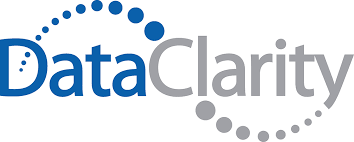5 Facts About DataClarity

Companies now more than ever are searching for ways to encompass and analyze the important data that surrounds their business. Data plays a huge role in understanding valuable insights about target demographics and customer preferences. DataClarity Corporation helps people easily access, prepare, consume and visualize any data from anywhere and transform it into actionable information. We sat down with Co-Founder & CEO Mark Mueller to learn more about how North Carolina’s thriving ecosystem has had an impact on his company.

What problem were you looking to solve when you started DataClarity?
Within the next year, the world will generate 50 times the amount of data from 75 times the number of information sources than 2011. Couple that meteoric growth with organizations who today use less than 1% of their enterprise data and you will begin to visualize a worldwide business problem on an unimaginable scale. It is obvious to many now that data is the new renewable energy, and those who successfully harness and manage it, and apply AI, machine learning, and other modern data-driven decision-making will have the greatest competitive advantage for sustainable growth and leadership in the years to come. DataClarity is building software to address exactly this problem – a self-service analytics and data science platform for business to rapidly access, prepare, and analyze any data from anywhere.
How much of your success do you attribute to luck vs hard work?
I believe my success stems from a combination of relentless determination and discipline coupled with extraordinary luck. To what degree each is material can be difficult to ascertain due to many factors such as timing which is also crucial. To have any degree of success, every entrepreneur needs the obvious including a great team, vision, strategy, plan, and execution which to a large degree they can control. But to be truly successful, entrepreneurs need other resources or events to appear at the right time which are often not predictable or controllable – these might include the employee who solves a pivotal problem, a unique customer or partner opportunity that opens a door, a promotional event that raises much needed awareness, or an aligned investor who provides just the right funding, salient guidance or connection needed to take the next major step. I put all these resources and events in the luck column, given very little can be done to predict or influence if and when they appear.
How do you think the North Carolinian ecosystem has impacted your success thus far?
The Research Triangle area now more than ever has a broad spectrum of hyper-educated talent and resources to help entrepreneurs at every phase of growth. A great example is CED which has been tremendous in terms of providing access to a network of professionals, events, and advisory through programs like Connections to Capital which has been invaluable to DataClarity as we pursue our first outside capital. I have really enjoyed connecting with many incredibly bright and talented people here in North Carolina many of whom have been approachable, engaging, and interested in helping however possible – now that our platform is in full production and the company is set to scale, I definitely foresee new opportunities to align with others who could mutually benefit.
How did you know when you had the right idea?
We knew when Apple visited our website, filled a form, and subsequently spent $4.5M on a DataClarity Analytics solution for their worldwide sales team. Similar projects then followed with Boeing, IKEA, Nike, and Volkswagen, so our software and ability to deliver for highly-discerning clients just became stronger – this helped us build both our confidence and product over time in that much of the R&D funding was sourced from these customers. From an investor perspective, the only true validation of an idea is revenue, specifically ARR in the B2B software and SaaS business.
What would you compare starting a company to?
Having bootstrapped, grown and exited to a Fortune 500, I equate it to climbing a challenging mountain like K2 or Everest, where your team, equipment, preparation, and ability to execute a plan despite enormous barriers and rapidly changing conditions determines whether you succeed or fail. It’s never a straight route to the top, and often times not something that even comes into view until the final stretch. Ironically, this can be the most challenging part of the journey, so it is critical to lead and feed the team, execute consistently with focus and discipline, and do whatever it takes until you reach the top.



